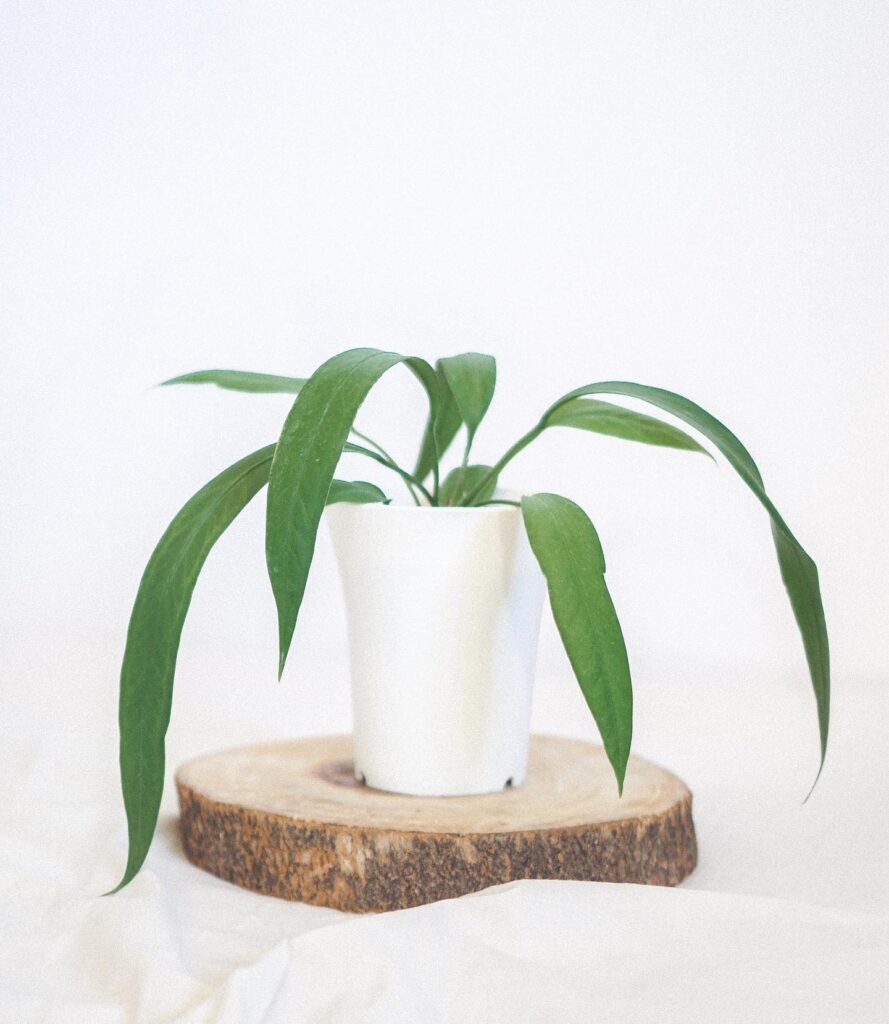Hello there, fellow plant enthusiasts! Today, I want to share a story about my very own Anthurium vittariifolium, also known as the Strap Leaf Anthurium. It all began when I visited a local plant nursery in search of a unique addition to my indoor garden.
As I wandered through the aisles, my eyes were immediately drawn to this striking plant with its long, narrow leaves and beautifully patterned foliage. I couldn’t resist bringing it home with me, eager to learn how to care for this tropical beauty in the UK climate.
Little did I know that the journey of caring for my Anthurium vittariifolium would be filled with joy, challenges, and the satisfaction of seeing it thrive in my home. Today, I’m excited to share with you everything I’ve learned about providing the best care for this stunning plant.
Appearance of Anthurium Vittariifolium (Strap Leaf Anthurium)
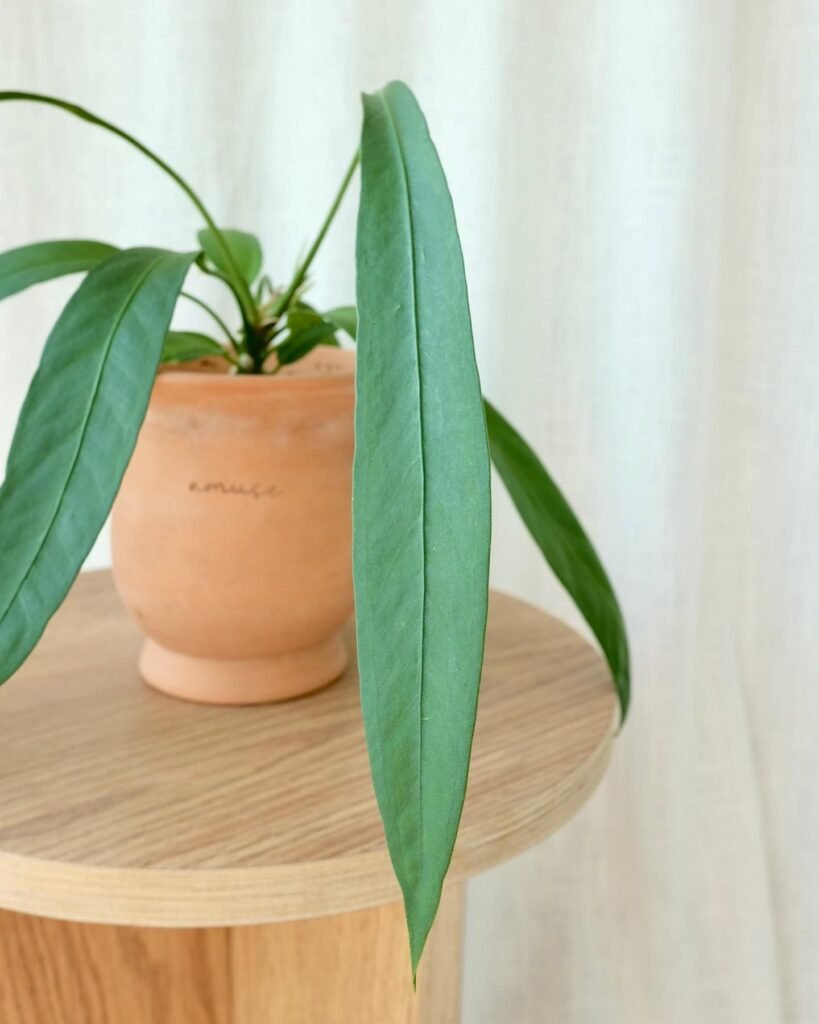
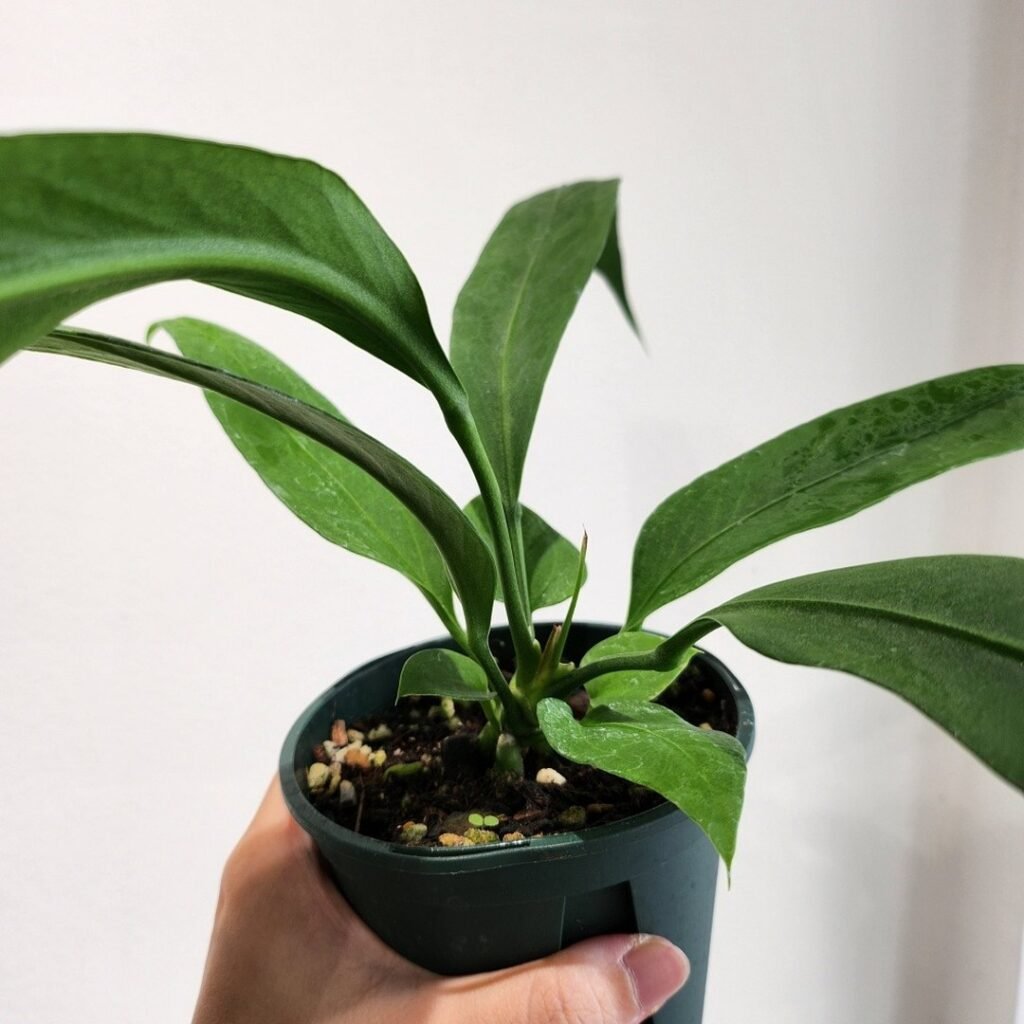
Anthurium vittariifolium, commonly known as strap leaf anthurium, is a stunning pendant plant that adds a touch of tropical beauty to any space. With its long, narrow strap-like leaves, this anthurium species captivates with its unique appearance and distinctive features.
The leaves of Anthurium vittariifolium are an elegant shade of green, providing a lush backdrop to its surroundings. The texture of the leaves is reminiscent of leather, adding a touch of sophistication to its overall look. As an epiphytic plant, Anthurium vittariifolium naturally hangs off of trees in its native rainforest habitat, creating a striking visual display.
As this anthurium species matures, it produces delicate light green, creamish flowers that eventually transform into vibrant red berries. The transition from flower to berries is a remarkable sight to behold, adding a pop of color and visual interest to the plant.
Understanding the appearance of Anthurium vittariifolium is crucial for recognizing its specific care needs and ensuring its proper growth and development. With its pendant form, strap-like leaves, and captivating color changes, this anthurium plant truly stands out as a unique and beautiful addition to any indoor garden or botanical collection.
 Did you know that Anthurium Vittariifolium, or Strap Leaf Anthurium, has a fascinating adaptation for survival? Its sleek, strap-like leaves are designed to shed water and debris effortlessly, allowing it to thrive in its rainforest home. This not only keeps the plant healthy but also enhances its stunning appearance, making it a captivating addition to any indoor garden. Each leaf’s design is a testament to nature’s ingenuity, ensuring the plant remains pristine in the humid, tropical conditions it loves.
Did you know that Anthurium Vittariifolium, or Strap Leaf Anthurium, has a fascinating adaptation for survival? Its sleek, strap-like leaves are designed to shed water and debris effortlessly, allowing it to thrive in its rainforest home. This not only keeps the plant healthy but also enhances its stunning appearance, making it a captivating addition to any indoor garden. Each leaf’s design is a testament to nature’s ingenuity, ensuring the plant remains pristine in the humid, tropical conditions it loves.
Light Requirements for Anthurium Vittariifolium

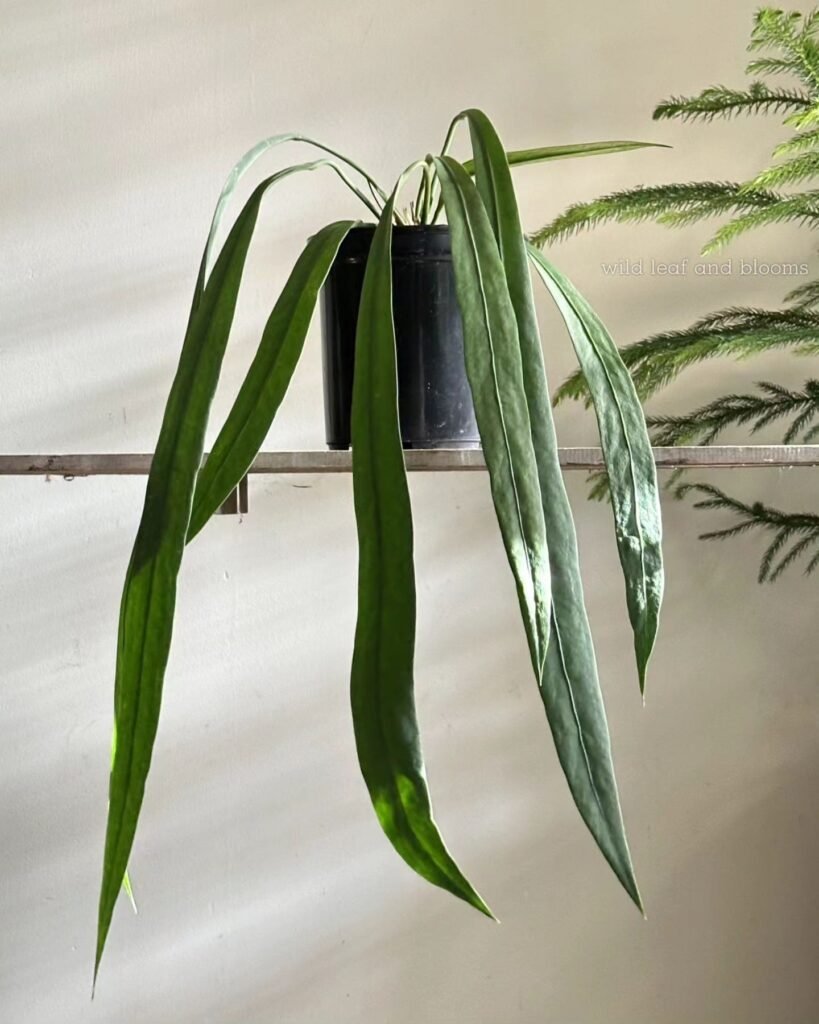
Anthurium vittariifolium, known as strap leaf anthurium, thrives in bright indirect light. Making sure your plant receives the right amount of light is crucial for its growth and flowering. Here are some care tips to ensure your Anthurium vittariifolium gets the light it needs:
- Place your Anthurium vittariifolium in a location where it can receive bright indirect light. This can be near a north or east-facing window, where it can get the required intensity of light without direct sun exposure.
- Ensure your plant gets at least 5,000 lux or 500 foot candles of light intensity. You can measure this with a light meter or use a sunlight app on your phone to determine the light levels in your chosen location.
- Anthurium vittariifolium can tolerate 1-2 hours of direct sunlight, but too much direct sunlight can damage its leaves. If you notice the leaves turning yellow or brown, it may be a sign that the plant is getting too much direct sun.
- Consider the specific needs of your Anthurium vittariifolium variety. While the general light requirements are similar, different Anthurium varieties may have slightly different preferences. Consult with a plant expert or research the specific variety you have to ensure you’re providing the optimal light conditions.
Remember, finding the right balance of light is essential for the overall health and well-being of your Anthurium vittariifolium. With proper light, your strap leaf anthurium will thrive and reward you with its stunning foliage and occasional blooms.

Watering Tips for Anthurium Vittariifolium (Strap Leaf Anthurium)

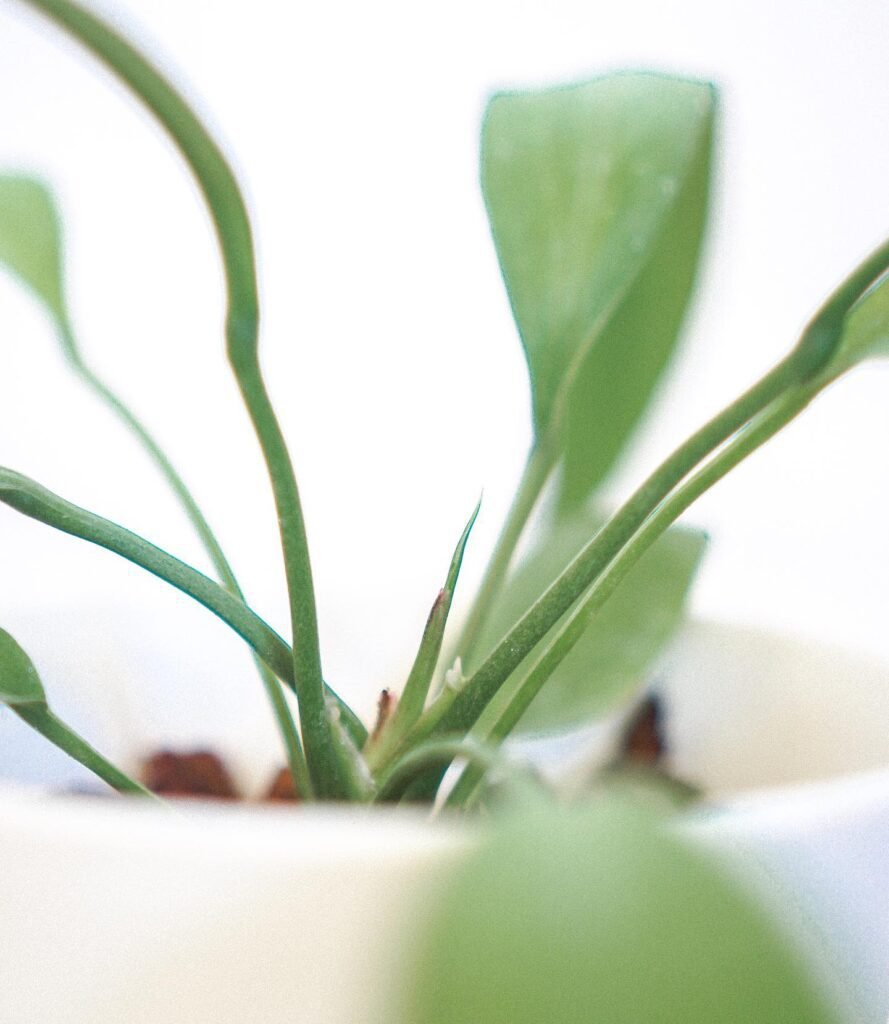
Proper watering is crucial for maintaining the health and vitality of Anthurium vittariifolium, also known as strap leaf anthurium. To ensure optimal growth, it’s important to water this tropical plant carefully.
Anthurium vittariifolium prefers to be kept evenly moist. Water the plant once the top 2 inches of the soil are dry, but be careful not to let the soil fully dry out. Overwatering can lead to root rot and other issues, so finding the right balance is key.
When watering Anthurium vittariifolium, avoid both under-watering and overwatering. Under-watering can cause the plant to become stressed and may result in drooping leaves and slowed growth. On the other hand, overwatering can suffocate the roots, leading to root rot and the decline of the plant.
The best approach is to monitor the moisture level of the soil regularly. Check the top 2 inches of the soil with your finger or a moisture meter. If it feels dry, it’s time to water. If it’s still moist, wait a little longer before watering again.
When watering, pour water evenly around the base of the plant until it starts to drip out of the drainage holes. This ensures that the roots receive adequate moisture without waterlogging the soil.
Remember, the watering needs of Anthurium vittariifolium may vary depending on the temperature, humidity, and light conditions. During hotter months or in drier environments, you may need to water more frequently, while in colder months or more humid conditions, you may need to water less often.

Fertilizing and Soil for Anthurium Vittariifolium
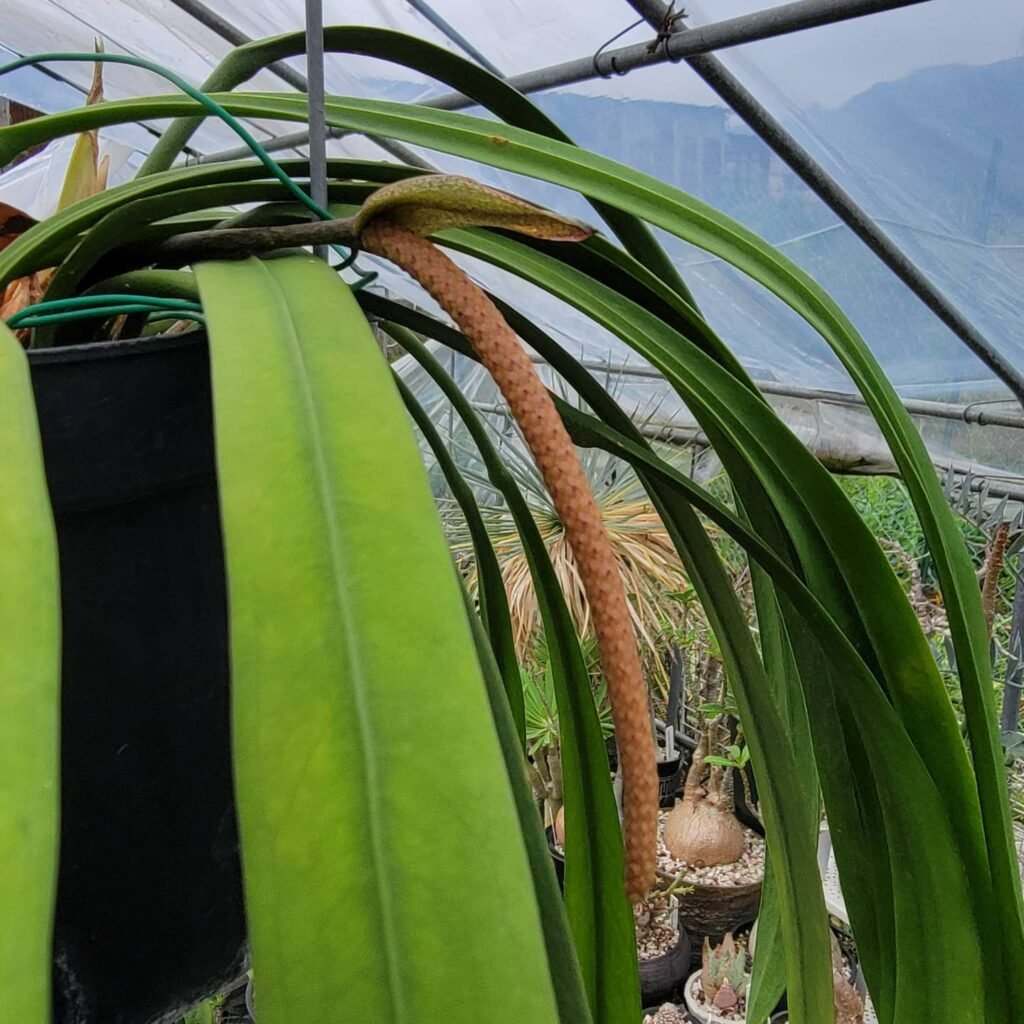
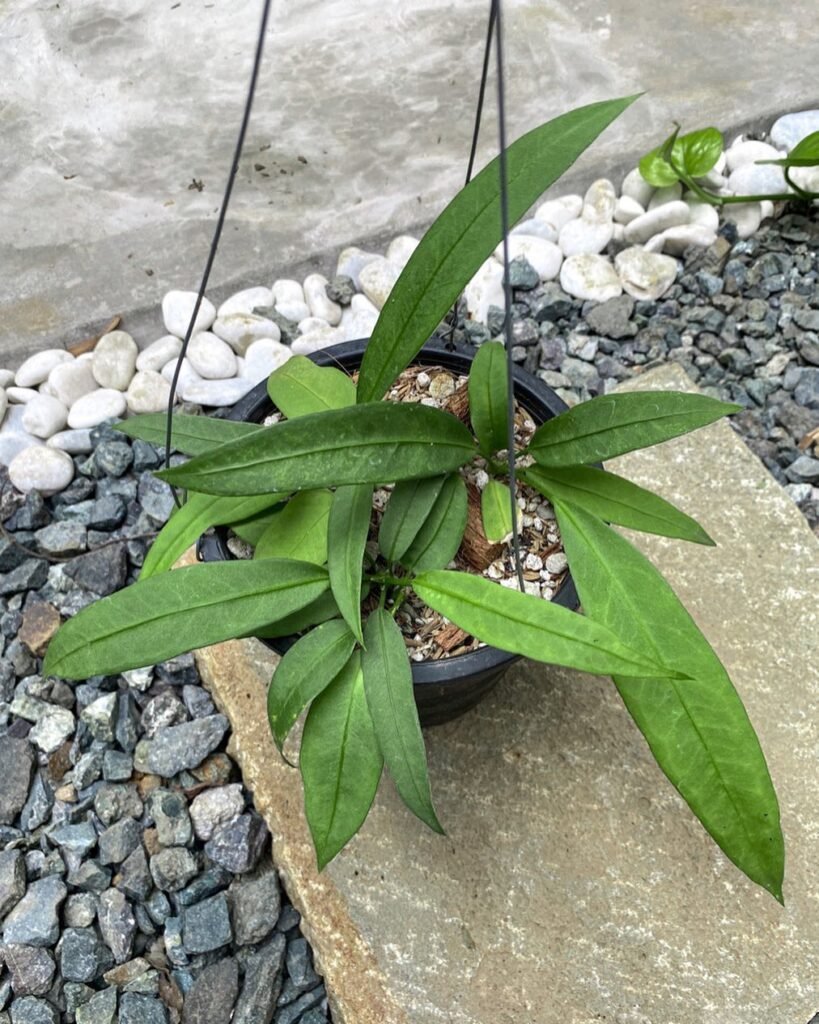
Ensuring the right fertilisation and soil mix is paramount for the flourishing growth and blossoming of my Anthurium vittariifolium, affectionately known as the Strap Leaf Anthurium. I’ve found that feeding the plant with a high-nitrogen fertiliser fortnightly or monthly supplies it with the essential nutrients required for its vigorous growth and the production of vivid blooms.
In terms of soil, the Strap Leaf Anthurium shows a preference for a light and porous mixture. It’s crucial to create a soil environment that drains well to dodge the pitfalls of waterlogging and the dreaded root rot. I recommend a blend of orchid bark, perlite, and horticultural charcoal. This combination ensures the soil not only drains efficiently but also holds just the right amount of moisture to meet the plant’s requirements, providing a balanced environment for its roots to thrive.

Pruning and Maintenance for Strap Leaf Anthurium
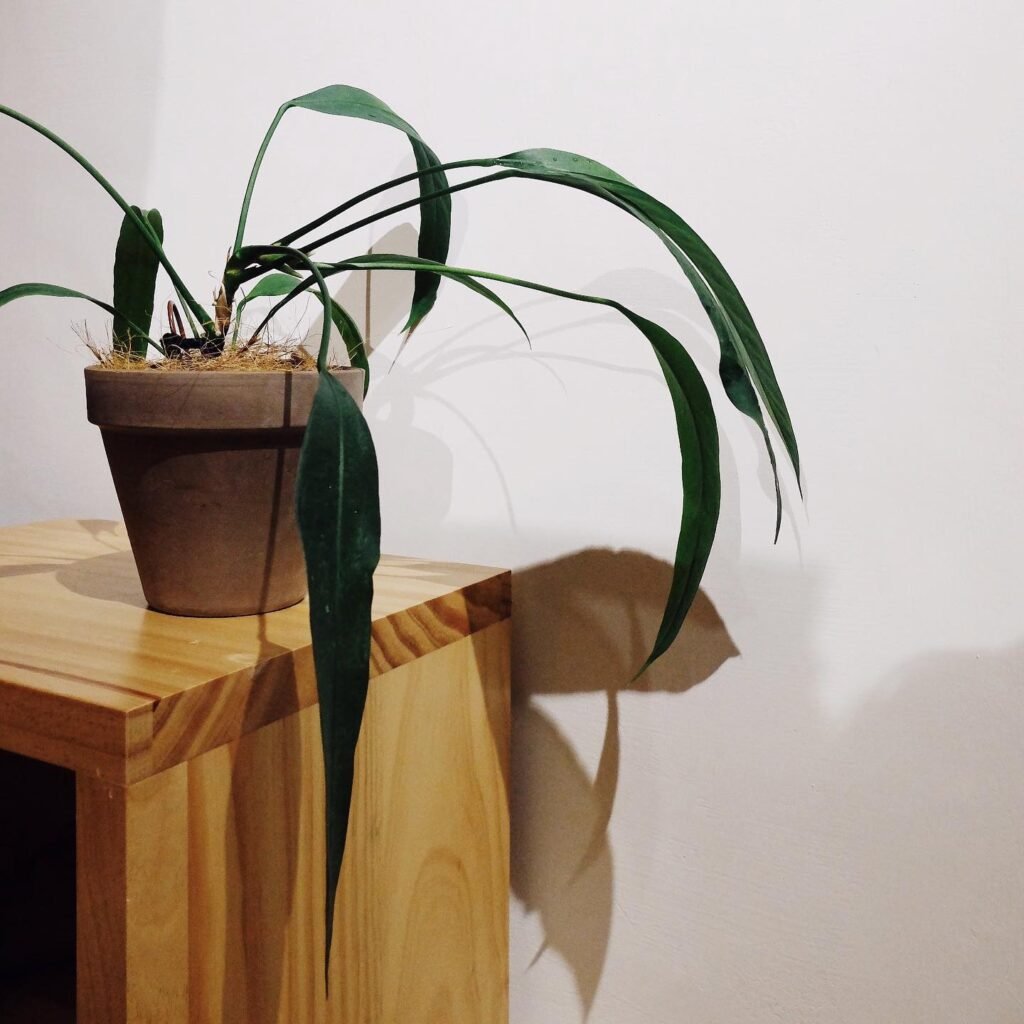
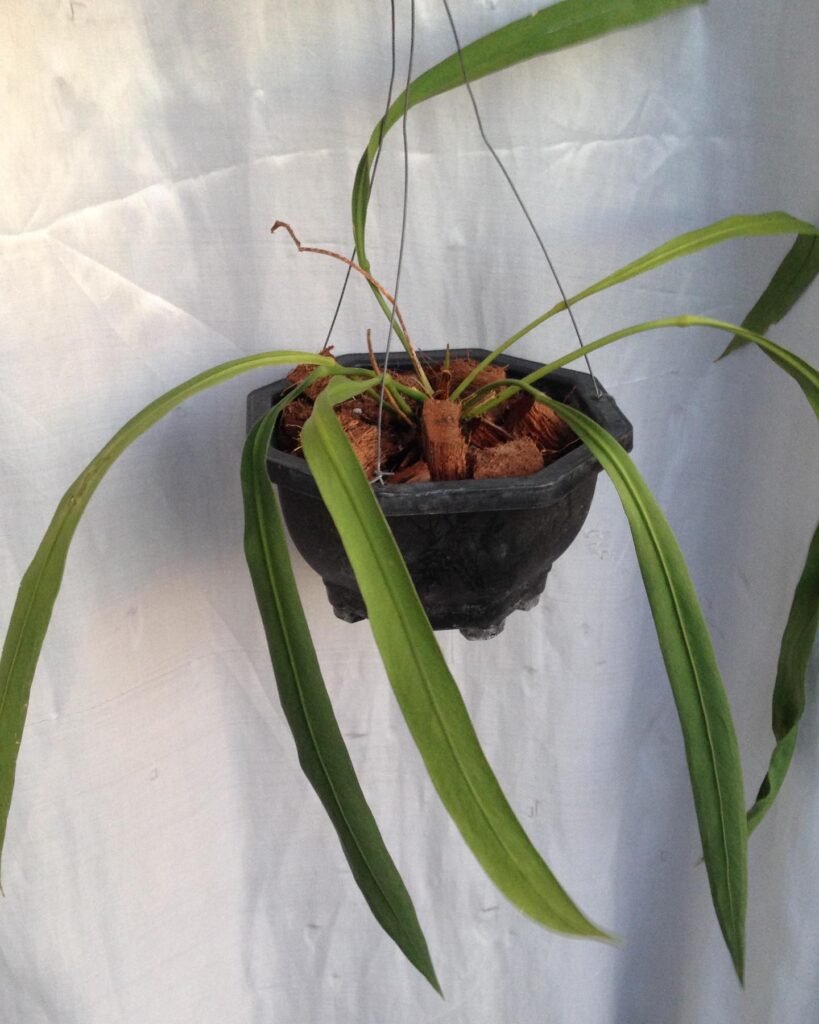
Regular pruning is essential for maintaining the health and appearance of Anthurium vittariifolium, or strap leaf anthurium. Pruning allows you to remove any dead or diseased growth, preventing the spread of disease and encouraging new growth. It also helps shape the plant and promotes branching, creating a fuller and more aesthetically pleasing appearance.
In addition to pruning, regular maintenance tasks are crucial for keeping your Anthurium vittariifolium in optimal condition. One important task is the removal of yellow or wilted leaves. These leaves not only detract from the plant’s overall beauty but can also indicate underlying issues such as improper watering or nutrient deficiencies.
“Regular pruning allows you to maintain the health and shape of your Anthurium vittariifolium, while ongoing maintenance tasks help keep it vibrant and pest-free.”
Inspecting your plant regularly for pests is another important part of maintenance. Common pests that can affect Anthurium vittariifolium include scale insects, mealybugs, and spider mites. If you notice any signs of infestation, such as sticky residue, webbing, or small insects on the leaves, take immediate action to address the issue and prevent further damage.
“Regular pruning and maintenance are vital for keeping your strap leaf anthurium healthy, vibrant, and pest-free.”

Propagating Anthurium Vittariifolium (Strap Leaf Anthurium)
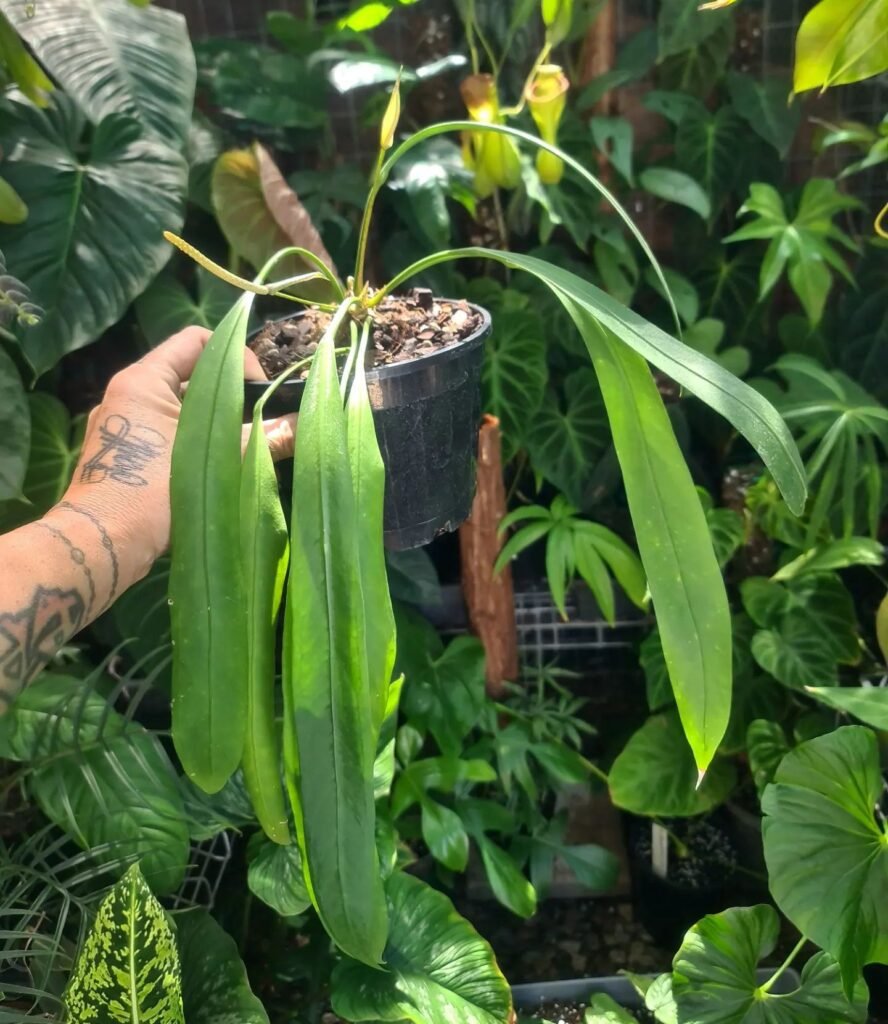
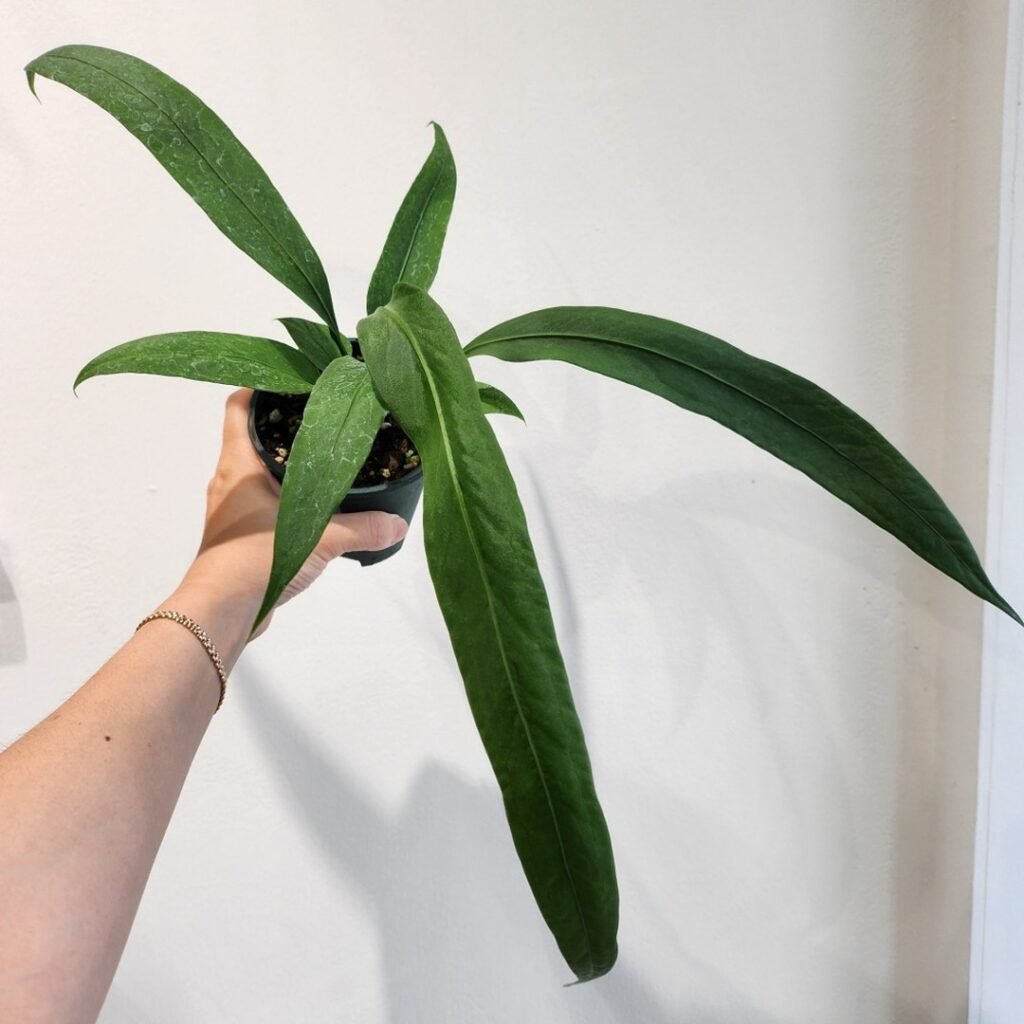
Propagating Anthurium Vittariifolium, commonly known as strap leaf Anthurium, is an exciting and rewarding process that allows you to expand your plant collection and share the beauty of this tropical species. There are several methods you can use to propagate Anthurium Vittariifolium, each with its own advantages and considerations.
Propagating with Stem Cuttings
One of the easiest and most popular methods of propagating Anthurium Vittariifolium is through stem cuttings. To do this:
- Select a healthy stem from the parent plant that is a few inches long.
- Ensure that the cutting has at least two nodes, which are the points where leaves attach to the stem.
- Place the cutting in a container with either water or a well-draining soil mix.
- Provide bright indirect light to encourage root development.
- Keep the soil or water consistently moist but not waterlogged.
- With time and proper care, the cutting will develop roots and grow into a new plant.
Propagating through Division
Another method of propagating Anthurium Vittariifolium is through division, which can be done when repotting the plant. Here’s how:
- Carefully remove the plant from its current pot.
- Gently separate the rootball into two or more sections, ensuring that each division has sufficient roots and foliage.
- Replant each division in a separate pot with a well-draining soil mix.
Propagating from Seeds
While propagating Anthurium Vittariifolium from seeds is less common, it can be an exciting way to grow this beautiful plant. Here’s how to do it:
- Obtain fresh seeds from a reputable source.
- Sow the seeds in a suitable growing medium, such as a mix of sphagnum moss and perlite.
- Keep the medium consistently moist and provide bright indirect light.
- Be patient, as germination can take several weeks or even months.
- Once the seedlings develop several leaves, carefully transplant them into individual pots.
Remember, propagation requires patience and proper care. While not all cuttings or divisions will be successful, with practice and the right conditions, you can enjoy the satisfaction of successfully propagating Anthurium Vittariifolium and expanding your plant collection.

Repotting Tips for Anthurium Vittariifolium
Repotting is an important part of caring for your Anthurium vittariifolium, also known as Strap Leaf Anthurium. It should be done once a year or when the plant has outgrown its current pot. Repotting provides several benefits, including refreshing the soil, preventing the plant from becoming rootbound, and promoting healthy growth.
When repotting your Anthurium vittariifolium, choose a container that is one size larger than its current pot. A well-draining and chunky potting mix is ideal for this plant. It will ensure proper airflow to the roots and prevent waterlogging, which can lead to root rot.
To repot your Anthurium vittariifolium, follow these steps:
- Remove the plant from its old pot carefully, gently loosening the rootball. This helps minimize damage to the roots.
- Inspect the roots and remove any dead or rotting roots. Trim them using clean, sharp scissors or pruning shears.
- Place the plant in the new pot, ensuring that it sits at the same depth as before.
- Fill in the gaps around the rootball with fresh potting mix, firmly pressing it down to eliminate air pockets.
- Water the plant thoroughly until water drains out from the bottom of the pot.
By following these repotting tips, you can provide your Anthurium vittariifolium with the optimal growing environment it needs to thrive. Remember to keep an eye on your plant’s growth and repot as necessary to accommodate its size.
 Did you know the Anthurium Vittariifolium, also celebrated as the Strap Leaf Anthurium, was first discovered in the dense rainforests of South America? Botanists were captivated by its elegant, elongated leaves and its ability to flourish in the lush, tropical understorey. This discovery not only introduced a new species to the world but also highlighted the incredible biodiversity of the rainforest. Today, it’s cherished by plant enthusiasts globally, bringing a piece of rainforest beauty into homes.
Did you know the Anthurium Vittariifolium, also celebrated as the Strap Leaf Anthurium, was first discovered in the dense rainforests of South America? Botanists were captivated by its elegant, elongated leaves and its ability to flourish in the lush, tropical understorey. This discovery not only introduced a new species to the world but also highlighted the incredible biodiversity of the rainforest. Today, it’s cherished by plant enthusiasts globally, bringing a piece of rainforest beauty into homes.
Toxicity for Pets and Humans
The stunning Anthurium vittariifolium, or Strap Leaf Anthurium, may be visually striking, but it’s important to note that this plant is toxic to both pets and humans. The toxicity of Anthurium vittariifolium is due to the presence of oxalate crystals, which can cause skin irritation and discomfort when in contact with the skin or if accidentally ingested.
If the crystals are ingested, they can cause swelling in the throat and difficulties with breathing. The severity of the symptoms can vary depending on the amount consumed and the individual’s sensitivity. As a precaution, it is crucial to keep Anthurium vittariifolium out of reach of pets and children to avoid accidental ingestion or skin contact.
The toxicity of Anthurium vittariifolium reinforces the importance of responsible plant ownership and awareness of potential hazards. It is essential to educate yourself and others about the potential risks associated with certain plants in order to ensure the well-being of both humans and pets.
Variegated Anthurium Vittariifolium – Anthurium Friedrichsthalii
The Variegated Anthurium Vittariifolium, or Strap Leaf Anthurium, is a plant that truly stands out in any collection, thanks to its unique yellow and light green blotches on the leaves. This variegated variety is as stunning as it is rare, bringing a touch of elegance and brightness to your home. However, its beauty comes with a note of caution: the variegation is known to be highly unstable, often reverting to the original green form, which makes caring for it a special challenge.
Despite the care it demands, the variegated Anthurium Vittariifolium is highly sought after, often carrying a higher price tag compared to the regular green form. For those considering adding this variety to their collection, it’s important to be prepared for its specific care requirements and the potential for its variegation to change over time.
Anthurium Friedrichsthalii vs. Vittariifolium
- Leaf Appearance: Friedrichsthalii sports darker, glossy leaves, contrasting with Vittariifolium’s lighter, matte leaves.
- Plant Size: Friedrichsthalii is more compact, ideal for smaller spaces, whereas Vittariifolium tends to be larger and more elongated.
- Care Needs: Both varieties share similar care requirements, needing proper lighting, watering, and fertilising to thrive.
Choosing between Anthurium Friedrichsthalii and Vittariifolium comes down to personal preference in aesthetics and available space. While Friedrichsthalii offers a glossy charm suitable for compact areas, the variegated Vittariifolium requires more attention to maintain its unique colouration but promises a spectacular display.
Despite the challenges associated with keeping the variegated Anthurium Vittariifolium, its unparalleled beauty makes it a worthwhile endeavour for dedicated gardeners. As with any plant, understanding its specific needs and potential changes over time is key to successful care. Whether opting for the glossy allure of Friedrichsthalii or the striking variegation of Vittariifolium, both varieties bring their own unique beauty and challenges to the world of indoor gardening.
Helpful Videos about Anthurium Vittariifolium (Strap Leaf Anthurium)
Have a peek at this brilliant selection of videos I’ve discovered, focusing on the care of the Anthurium Vittariifolium, also known as the Strap Leaf Anthurium. Each video is brimming with tips to make tending to your plant utterly simple. Ideal for anyone eager to embark on their gardening journey!
- Anthurium Vittarifolium Review | 2 Years Later | Is it worth the hype for this long leaf Anthurium?
- Potting big anthurium vittarifolium, repotting propagations, + taking cuttings
FAQ about Caring for Anthurium Vittariifolium (Strap Leaf Anthurium)

Fancy making your Anthurium Vittariifolium (Strap Leaf Anthurium) the star of your indoor garden? Venture into my tailor-made FAQ where I unveil every tip for the splendid care of your Anthurium Vittariifolium. Covering everything from perfect lighting to precise watering techniques, I ensure your prized plant not only survives but thrives.
Choose a location with bright, indirect sunlight. Direct sun can scorch the leaves, while too little light may inhibit growth.
Water when the top inch of soil feels dry, typically every 7-10 days, depending on indoor conditions. Over-watering can lead to root rot.
Yes, use a well-draining, airy potting mix. A blend of peat moss, perlite, and pine bark is ideal for maintaining moisture without waterlogging.
Anthuriums thrive in humid environments. Increase humidity by misting the leaves, placing a humidifier nearby, or setting the pot on a tray of wet pebbles.
Repot in spring or early summer when the plant becomes root-bound or the soil looks depleted, usually every 2-3 years.
Ensure it gets enough light, keep the humidity high, and use a phosphorus-rich fertiliser during the growing season to encourage blooms.
Yellowing leaves, wilting, and a mushy stem base can indicate overwatering. Let the soil dry out more between watering sessions.
Yes, but avoid direct sunlight and bring it indoors if temperatures drop below 16°C to prevent stress.
Trim away yellow or damaged leaves at the base to encourage healthy growth. Use clean, sharp scissors.
Brown tips can be a sign of low humidity or fertiliser burn. Increase humidity and ensure you’re not over-fertilising.
Use a balanced, liquid fertiliser diluted to half strength every 4-6 weeks during the growing season.
Keep an eye out for aphids, spider mites, and mealybugs. Treat infestations promptly with insecticidal soap or neem oil.
Yes, it contains calcium oxalate crystals, which are toxic if ingested. Keep it out of reach of pets and children.
Propagate by division during repotting, ensuring each section has at least one leaf and root system.
Aim to keep your environment between 18°C and 25°C for optimal growth.
Drooping can result from either under or over-watering. Check the soil’s moisture level and adjust your watering routine accordingly.
I hope this has clarified how to look after your Anthurium Vittariifolium (Strap Leaf Anthurium) plant. If you have any more questions, simply leave them in the comments, and I’ll be here to answer. Remember, every gardener has to start somewhere, and learning about your garden is a wonderful journey.

